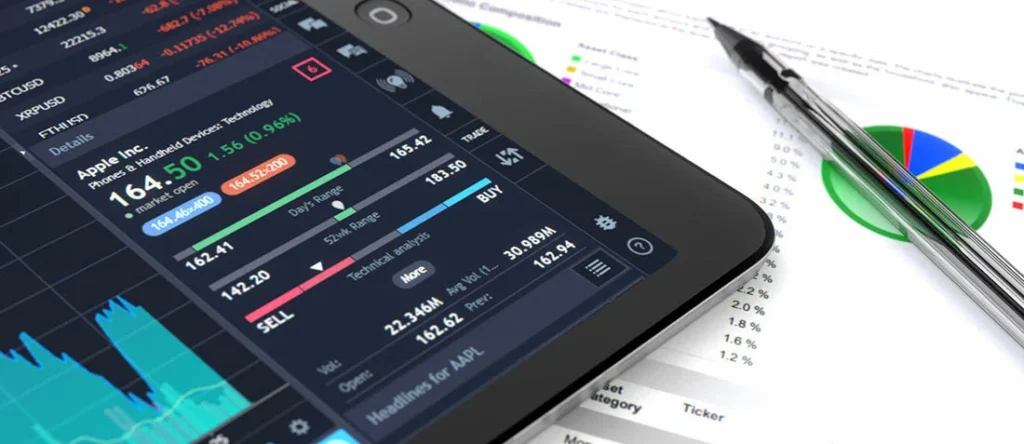In financial markets, technical indicator are of great importance for traders and investors, who should analyze the information from past price and volume data. These indicators, presented along with price charts, identify trends and the potential of a price level.
This manual uncovers the concepts of technical indicators: their understanding, classification, trading tactics, and risks and benefits. Indicators such as moving averages, momentum signals like RSI, and volatility indicators such as Bollinger bands can be used accordingly.
These instruments are useful, but it’s also important to know their limits. For instance, there may be a lag and/or false alarms. Technical indicators can be used wisely. They will gain leverage to navigate financial markets by navigating their intricacies.

What is a Technical Indicator?
Technical indicators involve mathematical calculations based on the price, volume, or open interest of a financial asset. Traders use these indicators to analyze historical data and make informed decisions regarding future price movements.
The indicators not only give valuable insights into the price structure but also offer guidance on how to reap potential profits from price movement. Technical indicator are one of the technical analysis tools.
Let’s expand this topic in detail to get more information about technical indicators.
How does it work?
Let’s first get familiar with technical analysis, which is a trading method to analyze assets and market movement. Technical analysis focuses on identifying opportunities to sell or buy by analyzing trading activity, like the movement of price and volume.
To assess market fluctuations, technical analysts focus on price patterns to evaluate the market’s strength or weakness.
Technical analysis can be utilized for stock, commodity, and forex investments. Technical analysis is most common among investors who prefer short-term price movements, like in the forex and commodities markets.
Investors perform calculations on technical indicator to derive data such as price and volume for detecting market trends. Traders weigh the trading indicators based on historical market changes and consider various factors in their evaluation. This includes investor objectives, recent market changes, and identifying trading opportunities.
Types of Technical Indicator:
The two main types of technical indicators are:
1. Oscillators:
In technical analysis, we use oscillators as a type of technical indicator. As shown by their names, oscillators oscillate within a specific range and provide valuable insights into oversold and overbought items in the market.
These technical indicators oscillate between the local minimum and maximum and focus on market momentum. Some examples of oscillators are:
Moving Average Convergence Divergence (MACD): It compares two moving averages to spot changes in momentum and potential buy or sell signals.
Relative Strength Index (RSI): The RSI measures the magnitude of recent price changes to determine if an asset is oversold or overbought.
Stochastic oscillators, commodity channel index (CCI), rate of change (ROC), on-balance volume (OBV), and average direction indicator (ADX) are also examples of oscillators.
2. Overlays:
Investors and traders use overlays to identify oversold or overbought levels on stock charts. They plot these overlays on the same scale as prices, which appear on top of the price plot.
Examples of overlays are moving averages and Bollinger bands.
Pros and cons of Technical Indicator:
While technical indicators offer valuable insights into market dynamics and potential trading opportunities, they also come with certain risks and limitations.
Pros:
Objective signals: Traders use technical indicators for signal generation in order to enter and exit the market. The signal can be enhanced because of these technically neutral.
Backtesting: Traders can test technical indicators against past data to see their relevance to different market conditions; thus, they can also identify the indicators that match their style.
Customization: One of the advantages of technical indicators comes in their flexibility, as they can be personalized. Hence, made to perfectly suit their users’ specific needs and preferences, which in effect improves the efficiency of various trading strategies.
Ease of use: Despite the fact that some technical indicators may appear to be quite complex, their simplicity allows them to be applicable to a wide variety of trading instruments and time frames, which turns them into powerful tools in the hands of traders of different levels.
Cons:
Lagging indicators: There are some of the technical indicators, which are lagging indicators, using past historical price and volume data. This means that they cannot give you signals of when the beginning or end of a trend happens. It results in missing a chance of a trading opportunity.
False signals: The indicators can sometimes send wrong signals, especially in the flat markets or the markets with range trading, where the price fluctuations are small. Traders that blindly trust signals can end up entering trades that run contrary to the expected outcome.
Over-reliance: Overuse of the technical indicators may result in traders not paying proper attention to other key information. It includes information about news events or fundamental analysis. Thus, dependency is developed, and, as a result, trade decisions might be inefficient and miss opportunities.
Complexity: Some technical indicators require complex mathematical calculations using complicated chart-drawing processes. It may be difficult for beginners or those who do not have a solid grasp on mathematics or statistics.
Conclusion:
In the end, technical indicators are the perfect instruments that traders and investors use in order to trade and invest in financial markets. These indicators provide historical trade territory and volume analysis. It tells about current market dynamics in order to detect trends and potential price levels for informed investment.
Technical signals may be confused by the noise and thus require some additional experience. These signals may trail market trends; hence, there is a false signal that can result from the overreliance on the indicators
Technical indicators should be complemented with other forms of analysis and the implementation of effective risk management techniques. This way, traders will be on the safe side by ensuring a well-rounded approach when dealing with financial markets.
Progress is made in trading when traders recognize technical indicators and use them efficiently. Their trading strategies are enhanced, and risks are reduced, leading to financial success.




